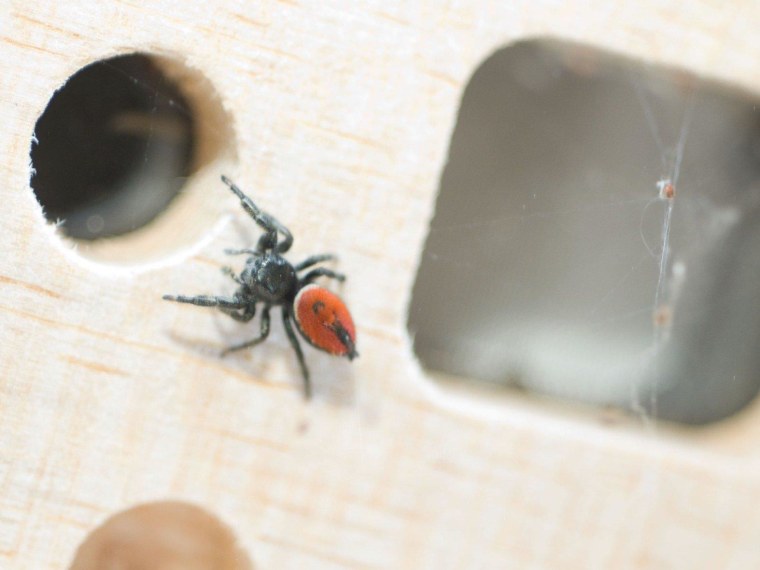The spider who became the star of an Egyptian teenager's outer-space experiment has settled into the Smithsonian Institution's National Museum of Natural History after returning from a three-month stint aboard the International Space Station.
The zebra jumping spider, known as Nefertiti, was sent into orbit aboard a Japanese cargo ship in July as part of the YouTube Space Lab project. Amr Mohamed, an 18-year-old student from Alexandria, Egypt, proposed the trip as part of an experiment to see whether the "spidernaut" could adapt to zero gravity and pounce on its prey the way it would on Earth. NASA astronaut Sunita Williams kept watch on the spider and confirmed that it could adjust its jumping trajectory to catch small insects.
"I think the spider's absolutely adapted to space," PhysicsCentral quoted Williams as saying in September.
After its stint in orbit, Nefertiti was brought back to Earth aboard SpaceX's Dragon capsule and returned to BioServe Space Technologies, a center at the University of Colorado that facilitates life-science experiments on the space station. The natural history museum's director, Kirk Johnson, personally escorted the spider from Colorado to the museum's Insect Zoo in Washington.
"The Insect Zoo is one of our most popular exhibitions, and we are thrilled that having such a great educational space also gives us the opportunity to host a critter as special as this space-traveling spider," Johnson said in a news release issued today. "And don't think it’s lost on me that the common name for this spider is the 'Jumping Johnson'; we’re practically family already!"
Nefertiti's life span is estimated to be about six months. It will spend its remaining time on display inside the same habitat it occupied in space, which is now set up adjacent to the Insect Zoo's Live Butterfly Pavilion. Although the Smithsonian says "Neffi" is the first jumping spider to return from orbit and successfully readjust to life on Earth, it's not the first spidernaut. Spiders have been spinning their way into Earth orbit for decades. And don't get me started about the Spiders From Mars....
More about bugs in space:
- Teens get to put their bugs in orbit
- Venomous spiders spin weightless webs
- Zero-G fruit flies blaze trail for humans
- Butterflies take flight on space station
Alan Boyle is NBCNews.com's science editor. Connect with the Cosmic Log community by "liking" the log's Facebook page, following @b0yle on Twitter and adding the Cosmic Log page to your Google+ presence. To keep up with Cosmic Log as well as NBCNews.com's other stories about science and space, sign up for the Tech & Science newsletter, delivered to your email in-box every weekday. You can also check out "The Case for Pluto," my book about the controversial dwarf planet and the search for new worlds.
